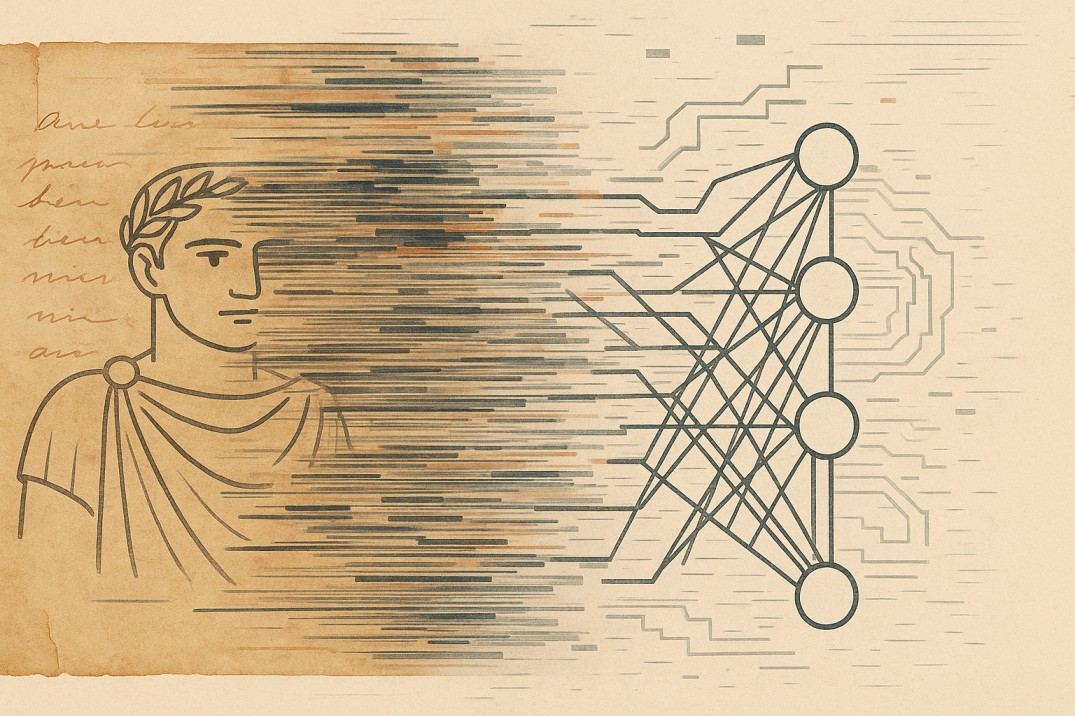AI and the Future of the Museum Experience
Museums in the Age of AI
Imagine walking through a museum where the exhibits seem to notice you: paintings subtly guide your gaze, sculptures respond to your presence, and digital content adapts to your interests. This is not science fiction, but the emerging reality of AI-powered museums, where attention, interaction, and personalization converge to transform every visit into a unique experience.
Museums have always directed visitors’ attention through the careful arrangement of space, lighting, and exhibits. Today, interactive systems and artificial intelligence are transforming these spaces into intelligent environments that respond to visitors in real time. From touchscreens and multimedia installations to adaptive augmented reality (AR) and virtual reality (VR) experiences, technology now shapes attention, engagement, and learning. (see AI reconstruction of historical figures).
Subtle design choices shape how individuals experience a museum. Research shows visitor attention is influenced by display layouts, interactive content, and pathways. AI applies these insights further, allowing environments to anticipate interests, respond to behavior, and personalize experiences, transforming museums from static repositories into co-created spaces of discovery.
AI and the Design of Attention
AI in museums mediates experience rather than simply presenting content. Early interactive systems allowed visitors to touch, swipe, or manipulate objects; today, AI adapts in real time, responding to movements, preferences, and interactions.
More than a decade ago, projects like ARTsENSE explored the potential of eye tracking and AR glasses, laying the groundwork for today’s adaptive museum technologies. Visitors could interact with exhibits while the system monitored attention, adapting content in real time through AR glasses equipped with eye-tracking, audio sensors, and spatialized 3D sound.
Natural gestures allowed visitors to engage with digital content, making artworks immersive and responsive. These early experiments demonstrated that technology could dynamically sustain focus while respecting visitor autonomy, inspiring a new generation of adaptive systems.
Recent projects illustrate this evolution. The Bode Museum in Berlin, in collaboration with the University of Warsaw and Liverpool Hope University, is conducting a study using real-time eye tracking to explore how visitors interact with historical artworks. Researchers examine viewing habits and attention distribution across audiences, revealing patterns that can inform adaptive museum designs.
Similarly, augmented reality applications like SARIM (Sound Augmented Reality Interface for visiting Museum) allow visitors to explore exhibitions using natural head movements, such as looking toward an artwork or slightly tilting their head, to select and interact with digital content, without using their hands or additional devices. The system integrates spatialized audio and gesture detection to adapt the experience in real time, providing contextual information and subtly guiding attention. This approach creates an immersive experience that respects the visitor’s autonomy, maintains focus, and reduces distractions.
Moreover, attention is maintained not only by technology but also by its integration into the environment. Systems like HIPS (Hyper-Interaction within the Physical Space) adapt to visitors’ movements and behaviors, allowing the museum itself to become responsive. When visitors are free to explore while technology subtly guides engagement, curiosity, and reflection are naturally sustained. Understanding how attention is shaped allows designers to combine immersive technologies with personalized pathways that respect visitor choice.
Immersion, Personalization, and Autonomy
Personalization is a key advantage of AI-powered museum experiences. Different devices and interfaces produce distinct effects on attention: VR headsets create total immersion, tablets encourage interactive exploration, and AR overlays highlight relevant details without interrupting visual engagement.
Visitors respond differently depending on their interaction style. Some follow suggested routes, while others prefer to explore independently. Adaptive systems, such as those implemented in the meSch project, account for these differences by responding to movement, gaze, and interaction choices. They provide personalized content while preserving autonomy, enabling visitors to engage at their own pace and according to their interests. Tangible smart objects, combined with digital feedback, create moments of curiosity and reflection that are difficult to achieve with static displays alone, further sustaining attention and supporting learning.
A balance between guidance and freedom is essential. Technology should support attention without imposing it, fostering engagement and allowing visitors to explore organically. By linking adaptive devices to environmental cues and visitor behavior, museums can create experiences that feel both immersive and personalized, guiding attention while encouraging independent exploration.
Challenges and Considerations in Designing Adaptive Experiences
Although artificial intelligence offers enormous potential, careful design is essential to prevent excessive distraction. Systems that guide attention too rigidly can limit spontaneity and reduce opportunities for discovery. The implementation of technologies such as eye tracking, physiological monitoring, or behavioral analysis must be accompanied by transparency, consent, and strong privacy safeguards. Similarly, emerging tools like brain–computer interfaces (BCIs), which detect engagement through neural signals, reveal the potential of highly adaptive environments but also underscore the importance of ethical reflection and thoughtful design.
Conclusion
Artificial intelligence is redefining museums as spaces of attention, interaction, and co-created experience. Adaptive AR and VR environments, gaze-tracking devices, intelligent audio, and responsive spatial layouts allow museums to unobtrusively direct attention while maintaining visitor autonomy. Attention is shaped not only by technology but also by the interaction between the visitor, the environment, and the content.
Thoughtful integration of AI broadens attention, helping visitors notice more, reflect more, and connect more deeply with cultural heritage. Museums that place visitors at the center of their design, striking a balance between immersion and autonomy, can create personalized and intellectually rewarding experiences. By thoughtfully integrating AI, museums can transform attention into a bridge between curiosity and deeper understanding, creating memorable encounters that not only inform but also inspire visitors to engage with cultural heritage in new ways.




.jpg)




